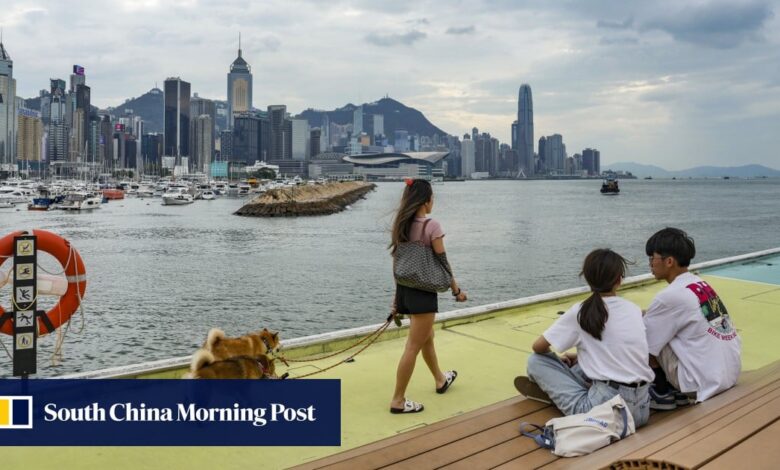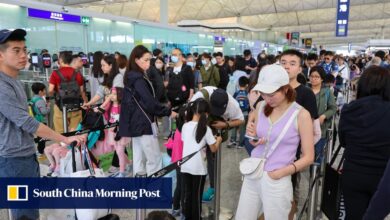Green groups urge Hong Kong authorities to be more aggressive in setting air quality targets as 2-month public consultation starts

Environmental advocates have urged the Hong Kong government to be more aggressive in setting pollution-reduction targets as it kicked off a two-month public consultation on its latest review of air quality objectives (AQOs).
The government proposes to tighten five prevailing AQOs and introduce three new parameters based on World Health Organization (WHO) benchmarks following assessments of a working group tasked with evaluating air quality improvement measures and setting relevant targets to be attained in 2030.
To attain targets set under the global health agency’s air quality guidelines, the Environment and Ecology Bureau will review AQOs every five years and put forward emission reduction measures.
Air pollution cuts lifespans in South Asia by 5 years or more: study
Air pollution cuts lifespans in South Asia by 5 years or more: study
“The working group adopted scientific approaches to assess the situation of air quality in 2030. Having regard to the assessment results, the working group endorsed the proposal to tighten five prevailing AQOs and introduce three WHO [air quality guidelines] new parameters,” a bureau spokesman said.
The government noted that Hong Kong’s air quality had been improving continuously, with a more than 40 per cent to 60 per cent reduction in major air pollutants and visibility improving greatly over the past decade.
However, roadside ozone concentration hit 34 micrograms per cubic metre last year, a decade high, up from 31 in 2021.
Hong Kong to pull plug on free EV charging at government facilities later in year
Hong Kong to pull plug on free EV charging at government facilities later in year
Under the government’s proposal, five prevailing targets for sulphur dioxide, respirable suspended particulates (PM10) and fine suspended particulates (PM2.5) will be tightened. The 24-hour target for sulphur dioxide will be aligned with the WHO benchmark.
Three new targets were introduced for nitrogen dioxide, ozone and carbon monoxide with the latter setting to meet the WHO’s standard.
However, environmental advocates said the government was not proactive and aggressive enough in setting new targets for combating air pollution.
Green Power director Cheng Luk-ki, one of 20 members of the working group, said the proposed targets for reducing air pollutants were unsatisfactory.
“Of course, I hope all the targets can meet the WHO benchmarks which can sufficiently safeguard public health. But now only two targets are aligned with the WHO’s. The government is not proactive enough to combat air pollution,” he said.
“At present there is no mechanism to propel the government to improve the targets or enhance relevant measures if it fails to achieve a desirable result. Then we have to wait for another five years for the next review, which will be too slow.”
Patrick Fung, CEO of the Clean Air Network NGO, said he was unhappy that the annual target for nitrogen dioxide and ozone for an eight-hour period had not been tightened and remained at 40 micrograms per cubic metre and 160 micrograms per cubic metre respectively, calling for the authorities to reduce it by half for the former and one fourth for the latter.
Hong Kong’s greenhouse gas emissions drop, but concern groups say more work needed
Hong Kong’s greenhouse gas emissions drop, but concern groups say more work needed
“To achieve the target of reducing nitrogen dioxide, the government could roll out more measures to reduce marine emissions,” he said.
“For the reduction of ozone, a more aggressive target will push the authorities to come up with more joint initiatives to reduce its emission in the region.”
Ground-level ozone is formed when volatile organic compounds and nitrogen oxides react with ultraviolet light. The key source of these pollutants is vehicle emissions.
The Clean Air Network said the proposed targets fell short of the safe levels laid down by the WHO.
“Unfortunately the current review is based on an assessment of the air quality in 2030 … In other words, the AQOs are accommodating policy measures, which is, in our opinion, putting the cart before the horse,” it said.





